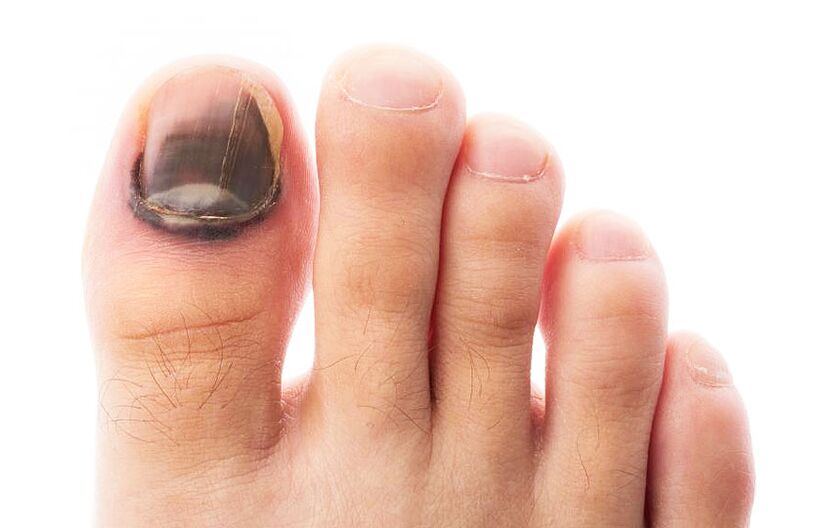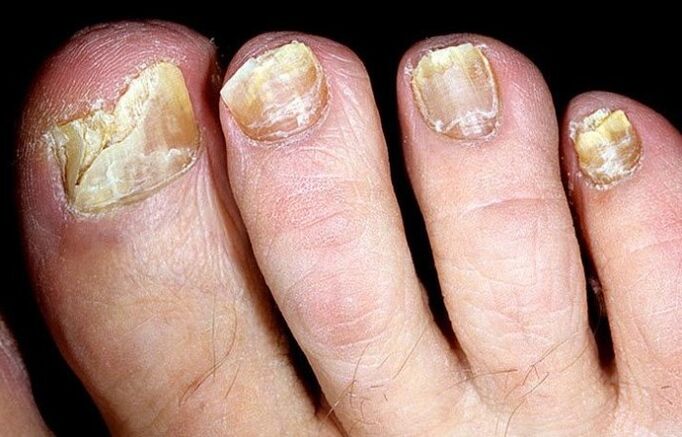
Few people know that getting rid of this unpleasant disease is quite difficult and the whole process takes quite a lot of time. Almost 20% of the population is affected by this condition, which occurs on both toes and fingernails. Age plays no role here at all, as the fungus is observed in adults, but also in adolescents and children.
Causes of the disease
Fungi, also known as onychomycosis, arise from the action of various types of fungi, or, to put it simply, pathogens. Personal hygiene is also important; if you ignore it, you create the necessary conditions for bacteria to multiply. In addition, you can easily become the owner of such an unpleasant disease, since the fungus can be infected by another person.
This most often happens in the following cases:
- use of common household tools and items;
- Unsterilized manicure instruments;
- saunas and baths;
- Shared showers in gyms or swimming pools.
The success of the effectiveness of treatment is the diagnosis of the causative agent of the disease, which is carried out using laboratory tests.
At the same time, each type of fungus has a specific area of infection. For example, some only affect the skin or nails on the toes and hands, while others affect the sides of the fingers and the upper part of the sole of the foot.
Much rarer are the effects of fungi such as epidermophytons, trichophytons and yeasts or molds, which most often occur in older people. This onychomycosis often affects the first toes.
The diagnostic process and the factors accompanying the disease

Before committing to a comprehensive treatment of nail fungus, especially on the toes, you should undergo an examination. However, it is worth remembering the following factors that only improve the process of bacterial development:
- The appearance of damage to the plate itself, as well as the surrounding skin.
- Various types of diseases, including varicose veins and other endocrine diseases.
- Decreased immune system function and hormonal imbalance (common in pregnant women).
The symptoms of a fungal disease depend largely on the type of pathogen. The toenails are often affected. There are four levels of damage:
- normotropic;
- hypertrophic;
- atrophic;
- Onycholysis.
In addition, the disease is quite dangerous because mold has a negative effect on the body itself, as well as on its intoxication, as the bacterium releases toxins. Let's take a closer look at how to get rid of this disease and what medications will really help you forget about this infection.
Method of treating the disease
In order to choose the right and, most importantly, effective treatment, it is necessary to take into account the degree of damage to the nail plate and the speed of its growth. In addition, the effect is the same in both cases: for damage to the toenails and for fungus on the hands, treatment can be either complex or local.
Local exposure is most often required when the fungus has affected only a few nails or when only half of the nail plate is affected.
As for the complex technique, doctors prescribe antifungal drugs both externally and internally. You should also take vitamins to strengthen the immune system or immunomodulators and agents with disinfectant effects. For example, a fairly good product based on acids and essential oils is available in the form of a spray or lotion and the reviews about it are only positive. It is important that from a financial point of view the product is suitable for absolutely everyone, as the price is quite reasonable.
Taking pills is possible only after a doctor's prescription, as they have a strong effect on the entire body, especially in case of liver problems. Of course, taking such drugs is contraindicated in pregnant and breastfeeding women. Tablets are prescribed only if creams do not have a therapeutic effect and the affected area of the nail plate is large enough.
Preventive methods
As already mentioned, the infection process occurs through direct contact of nails or skin with the source of infection. If your immunity is fine, you don't need to worry. Otherwise, the disease takes root very quickly and is very difficult to overcome. It is enough to observe the following personal hygiene rules:
- Do not walk barefoot on beaches or in swimming pools.
- Wear socks and change them daily.
- Under no circumstances should you try on a stranger's shoes;
- Dry your feet after showering.
Such simple rules will allow you to increase your chances and not become infected with this extremely unpleasant disease from someone else, which will cause you a lot of inconvenience and discomfort in the future.



















